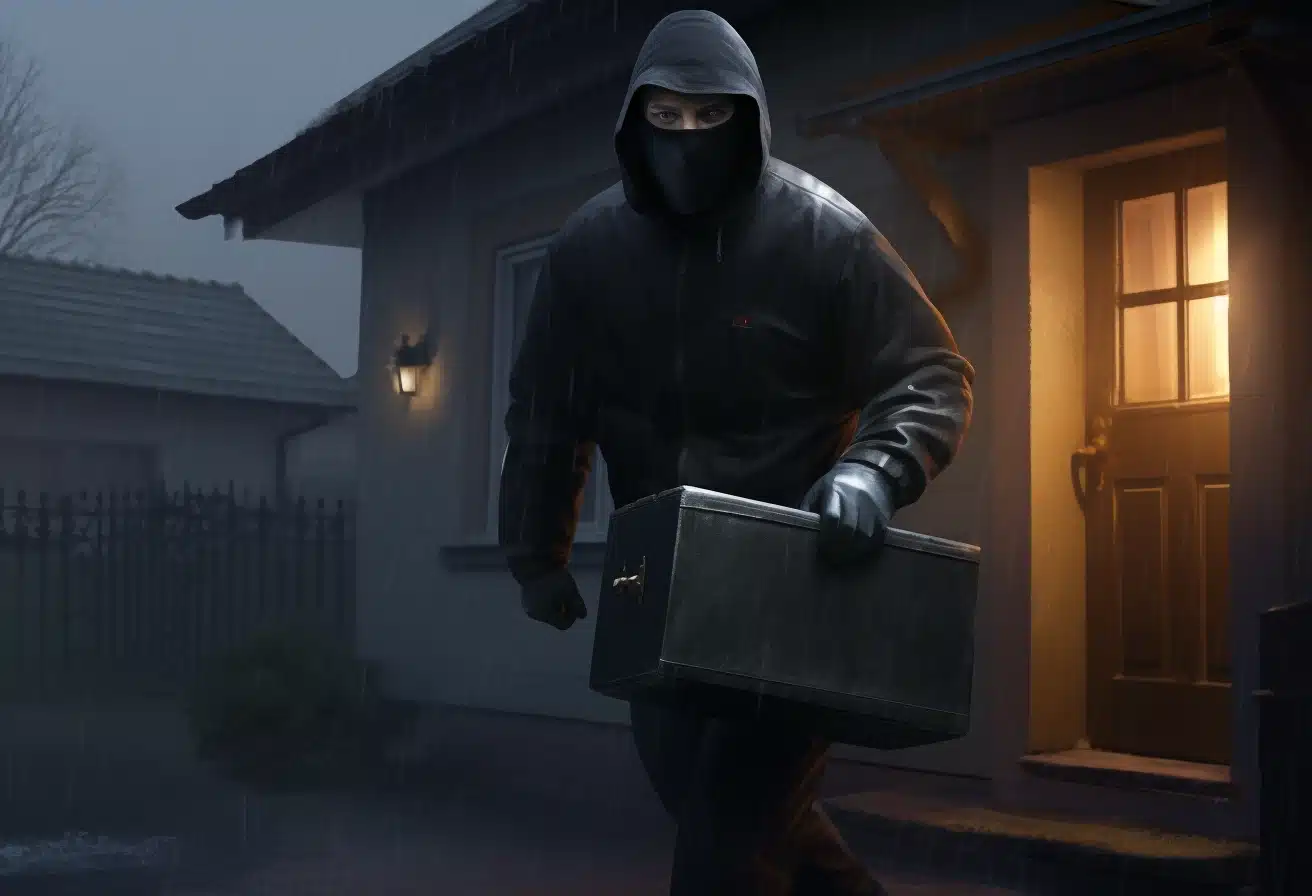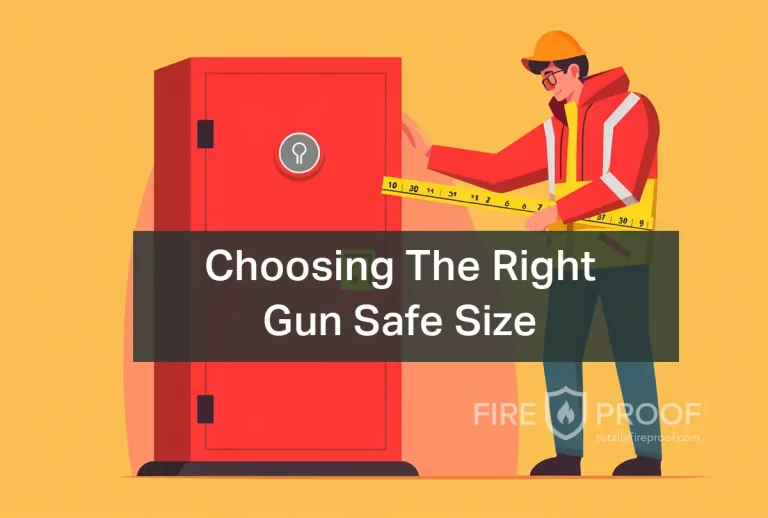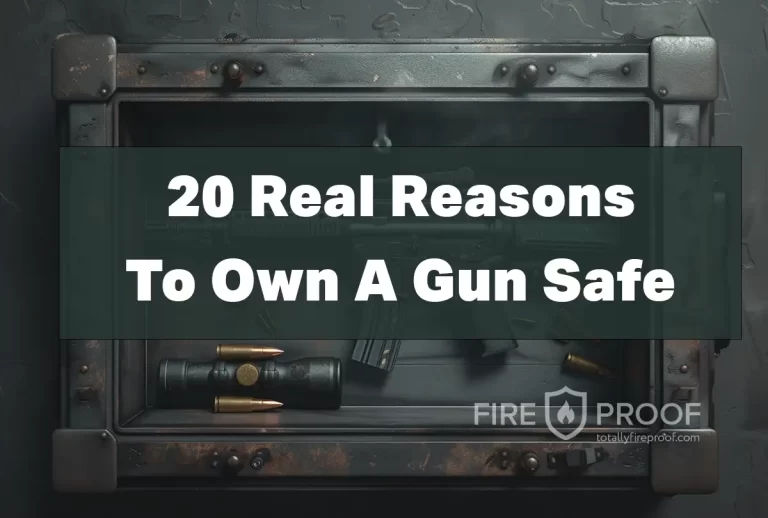How To Prevent Burglars From Stealing Your Safe
Burglaries are an unfortunate reality that many homeowners face. While safes are a fine way to boost your home security, it should be admitted that they’re not invulnerable. Perpetrators can still break into safes, especially into cheap ones. So you may be wondering – Do Burglars Steal Safes? For example if they can’t open the safe right there at the spot. And the answer might surprise you.
Yes, burglars may carry away and steal the whole safe. Especially those that are easily transportable or not properly secured. This applies to both fireproof and regular safes.
But you CAN prevent it from happening. This is why we wrote this guide about safe theft and why we give you practical tips on how to protect your valuables. Learn what types of safes are mostly vulnerable to theft and apply strategies that can deter burglars and keep your home secure.
Types of Safes Burglars Target First
Portable Safes
For burglars, portability is key. When infiltrating a home, they prioritize safes that are easy to transport and conceal, making portable safes a prime choice. These lightweight safes, often placed in bedrooms or nightstands, are often spotted during initial searches, making them an attractive option for burglars seeking quick and easy gains.
Safes With Simple Locks
Another factor that makes portable safes vulnerable is their very basic security mechanisms. Many of these safes rely on simple combination locks or key-based access, which burglars can often bypass using common techniques like lock picking. The ease of entry encourages burglars to target these safes.
In contrast, tamper-resistant safes, those equipped with advanced security features like time-delay mechanisms, relockers, and reinforced construction, are less appealing to burglars. The increased difficulty and time required to break into these safes discourage them from targeting them. They quickly realize that such tamper-resistant safes are not worth the effort and risk. The simple fact that valuables are not easily accessible is often enough to deter any attempts.
So, if you’re considering a safe to protect your valuables, choose the one that is can’t be easily moved. For example a safe that is bolted to the floor. Or you can choose a heavy enough safe that will be challenging to lift. Additionally, opt for safes with advanced security features.
Common Burglary Techniques
Burglars employ various techniques to gain access to safes and steal the valuables they contain. However, there are certain techniques that are used more often than others.

The main reason these techniques are more common is that they require less effort and are easier to execute. They either do not require special skills or are simply less time consuming. And in the case of a home break-in, these are deciding factors. Here are the methods you should know about:
- Try-Out Combinations: Burglars may attempt to unlock safes by simply trying common combination sequences or using brute-force methods. This is particularly effective for safes with simple combination locks or those that have not been changed regularly.
- Prying the Door Open: Burglars may use pry bars or other tools to force open the door of a safe, especially if it is poorly constructed or not properly secured. This method can be noisy and time-consuming, but it may be necessary for burglars who are unable to access the combination or who are targeting a more secure safe.
- Stealing the Locked Safe: In some cases, burglars may simply steal the entire safe, even if it is locked. This is often done with portable safes that are easily moved. Once the safe is removed from the premises, there’s really little to no chance for a homeowner to recover the valuables.
To protect your safe from these common burglary techniques, to choose a high-quality safe with advanced security features. You should also avoid placing the safe in easily accessible locations. Also never make your safe visible from windows. And it’s highly advisable to secure a safe with a sturdy anchor point (which is usually supplied with the safe by the manufacturer).
If you want to know more about Tools for Unlocking Safes, read this article where we explore both Professional and Amateur Methods.
How to Decrease the Likelihood of Safe Theft
Protecting your valuables isn’t just as simple as locking them up. It takes a bit more smart planning. Here’s a no-nonsense guide to beefing up your safe’s security.
Pick the Right Safe
The first step is choosing a tough safe. Go for one made of solid materials like thick steel. You want it to have advanced locks that delay opening, mechanisms that lock it up tighter if tampered with, and designs that make it hard to break into.
A Heavier Safe is a Better Safe
Safe weight plays a significant role in theft prevention. A heavier safe, typically weighing over 500 pounds is more challenging to carry away, even if it is not anchored. That’s good for you because thieves prefer something they can grab and go. A heavy safe? Not so much.
Anchor Your Safe Down
Don’t just leave your safe standing randomly. Bolt it securely to something strong, like a wall stud or concrete floor. This way, even if a burglar brings tools, they’re not getting your safe off easily. This is one of the most effective ways to deter thieves.
Choose a Smart Location
Keep your safe out of sight. Avoid places like bedroom closets or near windows. The best spots are hard-to-reach ones, like a basement or a hidden closet. If burglars can’t find it, they can’t steal it.
Boost Your Home Security
Finally, don’t rely on the safe alone. Beef up your home’s defense with alarms, motion sensors, and cameras. Make your house a fortress that thieves think twice about trying to enter.
Summarizing
While safe in itself is a superb means of protecting your valuables, they are not always a guaranteed way to stop theft. It all depends on the safe’s capabilities and how you install it. And yes, burglars do target portable safes, particularly those weighing less than 500 pounds, due to their ease of transportation.







